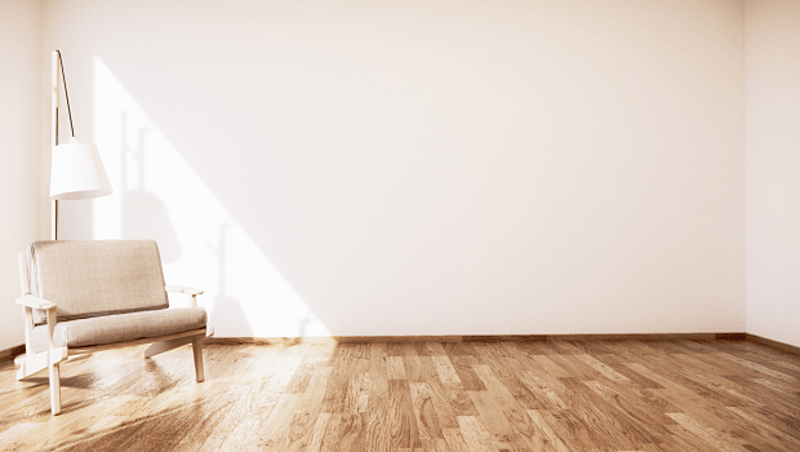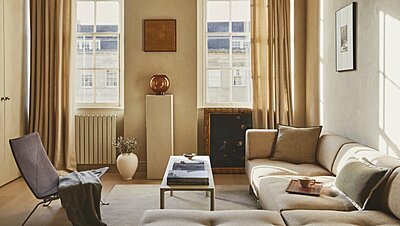Everyone will admire the look and feel of a well-maintained wooden floor. Engineered wooden floors are made of a solid layer of hardwood on the surface, with a soft layer of softwood or plywood at the base. They are more durable and require less maintenance than solid wood floors. In this article, we will discuss how to prevent and repair damage to wood flooring and give solutions to common issues.
10 Common Issues and Solutions to Wood Flooring:
Many issues arise when it comes to damage control and repair of wood flooring. The ten most common problems related to wooden flooring and their solutions are discussed in the following sections.
1. Excessive Wear and Tear
Though wear and tear can be seen on all floors after years of use, a wooden floor that wears out within 2 or 3 years can be a sign of other problems. It’s quite possible that the finish was done in a hurry, or the sanding was done badly. It could also be a problem of poor maintenance.
If the sanding was done improperly, the finish settles at the bottom of the sanding grooves, but the top of the grooves have little finish on them. The surface will break down when exposed to foot traffic. It is best to resand the floor and apply a proper coat of finish to cure this problem.
2. The Finish has Debris
A wet finish can attract all sorts of dirt. This will be magnified once the floor has dried. It is best to clean all surfaces before working on the finish. Clean all the room fixtures and lights. Wipe down the walls, clean the floor, and use a soft cloth. The finish itself must be strained, and the applicator and tray must be cleaned. If debris does find its way into the finish, it can be repaired by sanding the floor and applying another coat of finish.
3. The Finish is Peeling
The reason for the peeling finish is the floor was not prepped properly before the finish was applied. If the room has been sanded too much, the finish will not stick to the floor. If the finish is of poor quality, there is stain residue or inadequate cleaning between coats. These can all cause peeling.
The best way to deal with peeling is to sand it down and apply the finish all over again.
4. Blemishes from Sanding
If you use worn sanding pads or abrasive screens to sand the floor between coats of finish, they will create scratches. Applying coats of finish will magnify the effect. The finish needs to be sanded down again and reapplied to repair the damage. Using 3M abrasive pads can create fewer scratch patterns and make the finish stick better. Use 150-grit to 180-grit pads for oil-based finishes and 220-grit for water-based finishes. You have to sand past the coat where the scratches were initially made to repair the floor.
5. Gaps in the Floor
If bespoke flooring has been installed correctly, floorboards will hold tightly in humid weather but might show gaps in dry weather. Gaps may occur in floors where there is a lot of sunlight, homes heated with woodstoves, or having heating ducts, which creates a dry environment. The best time to repair gaps is in humid weather when the space between them is smallest. Fill the patch by gluing slivers of wood to the edges of the floorboards. Apply glue to only one side of the sliver so that the boards are not glued together.
6. Cupping of Floors
The edges of a board will cup when the bottom is wetter than the top. It can happen when the flooring is installed over a wet floor. A vapor retarder installed between the subfloor and the floorboards can help slow the condition by slowing moisture migration. Aquabar B by Fortfiber is good for strip flooring, while Bostik’s MVP is good for wide plank flooring.
If the floor does not lie flat after moisture issues are corrected, it needs to be sanded. Check the bottoms of the boards with a moisture meter and sand only when the moisture level is within 1%. Sanding the peaked edges of a cupped floor too soon could result in crowned boards when dry.
7. Buckling of Boards
Moisture is the main cause of buckling. Improper fastening aggravates the condition. Nails of the wrong size or spaced too far apart can cause buckling. Using the wrong size trowel can also cause poor bonding between the boards and the subfloor. Buckled floors have to be replaced rather than repaired. Moisture issues need to be sorted out before this is done. The moisture content between the floorboard and the subfloor needs to be at the right level.
8. Removing Stains
Wood floor stains can be removed with a wood floor cleaner. Stains in the finish must be sanded out. Stains that penetrate the wood fibers are the most difficult to remove. Brushing two-part bleach over the surface will remove most stains. However, the entire surface may need to be bleached to create a uniform effect.
9. Removing Cracks
Cracks are more likely to develop on factory floors rather than homes. The usual culprit is floor nailers. You can repair cracks with a manufacturer's repair kit: wood filler, colored marker, and a bottle of finish. Or replace the board, fill the crack with wood filler, and apply a coat of finish over the floor so the color and tone is uniform.
10. Irregular Floorboards
Poor sanding and softer spring wood are the main reasons for deformities in wood floors. Poorly maintained drum sanders and low-quality abrasives can also create irregular floorboards. To repair, the floor needs to be flattened with a quality drum sander, a tri-planetary sander with three orbiting heads, or a buffer that has a hard plate attachment. The floor will have to be refinished when the repair is complete.
We have looked at the most common problems related to wood flooring and their solutions. Using the services of a professional wood floor installer and maintaining the floor properly by sweeping, mopping, oiling, and applying finish every 3 years or so will extend the life and durability of the wooden floor and increase your level of satisfaction.

















